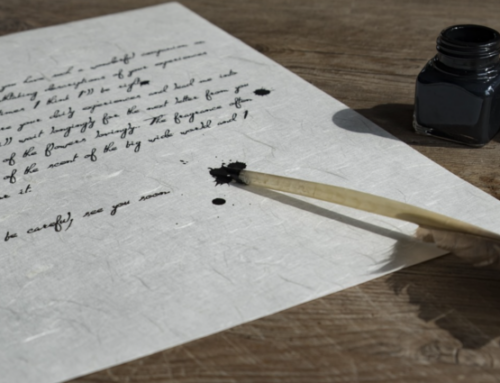In his latest book, Joseph Epstein takes on the elusive topic of charm, which consists of being pleasing to others and making the world seem a better place. Charm radiates light, order, and good humor; it is cool and calm, not hot and excited. Perhaps, like beauty, charm is one of the blessedly “useless” things the universe, which we neglect at our own peril.
Charm: The Elusive Enchantment, by Joseph Epstein (200 pages, Lyons Press, 2018)
 Joseph Epstein (b. 1937) is a veteran essayist and former editor of The American Scholar, whose writings have often taken a wittily philosophical look at human nature; previous works include Friendship: An Expose, Snobbery: The American Version, and Envy. In this book, he takes on the elusive topic of charm. Mr. Epstein admits that it’s easier to talk about the effects of charm, or name examples of it, than to define it with Thomistic precision. Etymologically, charm is connected with the idea of magic, being derived through French from the Latin carmen, song or magical incantation. Charm is related to style, the way of doing something. But it is not merely manner, but matter as well. Mr. Epstein states that “the spell that charm casts takes one out of oneself, lifting one into another, more exalted realm.” One is charmed “by another person’s looks or personality or general artfulness of presentation.”
Joseph Epstein (b. 1937) is a veteran essayist and former editor of The American Scholar, whose writings have often taken a wittily philosophical look at human nature; previous works include Friendship: An Expose, Snobbery: The American Version, and Envy. In this book, he takes on the elusive topic of charm. Mr. Epstein admits that it’s easier to talk about the effects of charm, or name examples of it, than to define it with Thomistic precision. Etymologically, charm is connected with the idea of magic, being derived through French from the Latin carmen, song or magical incantation. Charm is related to style, the way of doing something. But it is not merely manner, but matter as well. Mr. Epstein states that “the spell that charm casts takes one out of oneself, lifting one into another, more exalted realm.” One is charmed “by another person’s looks or personality or general artfulness of presentation.”
The latter phrase is key; charm is a kind of “performance art,” the “virtuosity of personality” consisting of being pleasing to others and making the world seem a better place. It is of the essence of charm to be quick-acting and evanescent, lasting only as long as the charming person or object is present to the senses. Aesthetically, charm is related to the traditional category of the Apollonian as opposed to the Dionysian. It radiates light, order, and good humor; it is cool and calm, not hot and excited.
Mr. Epstein names jazz musician Louis Armstrong as one of the all-time charming figures in the world of the arts in the 20th century. Armstrong focused on bringing pure pleasure to his audiences through his music and on presenting a genial, likeable personality—even at the risk of being thought an “Uncle Tom” by some (mostly politically motivated) people. His charm appears to have been genuine and no “act.” The trumpeter and his Catholic wife, Lucille, were having an audience with Pope Pius XII one day, and the pope asked the couple if they had any children. Armstrong responded, “No, Daddy, but we’re working on it.” During a concert for King George of England, Armstrong turned to the monarch and said, “This one’s for you, Rex.” Addressing the pope as “Daddy” and the king of England as “Rex” is charming to the last degree, and it was because of his beloved charm that Armstrong could get away with such relaxed protocol. The Armstrong case illustrates another point as well, that charm is closely allied to humor.
Another area of performance in which charm radiates into our lives is the movies. Mr. Epstein admires the classics of the Golden Age of Hollywood, as do I. At a time when movies were the center of popular culture, ordinary people modeled their behavior, speech, dress after their silver screen idols. (I have photographs to prove it: My grandfather in the 1940s looks suspiciously like an Italian Clark Gable, while my grandmother was often likened to Sophia Loren. My other grandfather, a physician, took after Robert Young).
Mr. Epstein goes through the roll call of familiar personalities, all charming, each different and unique: Cary Grant, Fred Astaire, Ronald Colman, Audrey Hepburn, Deborah Kerr, Myrna Loy (but no Greer Garson—a serious omission!) This traditional brand of charm went into decline when the classical Hollywood style was replaced by the counterculture ethos. For Mr. Epstein, it was not a positive change for either art or society. Life mirrors art, and with the salutary role models gone, our society increasingly came to resemble the crude, rebellious and violent movies emanating from the “New Hollywood.”
Thus far the positive side of charm. On the flip side of the coin, the chapters “Charmed Lives” and “Charming Rogues” examine what happens when charm becomes corrupt and decadent. Casanova and Lord Byron were men whose charm was merely a con or a seduction. Of a turn-of-the-century rake, the author writes: “Charm of [Morton] Fullerton’s kind wears thin. Seductions are not medals, lovers achievements. Men and women living on charm alone are soon enough forgotten.” Such false charm is close cousin to vanity and narcissism. Likewise, the social charm that thrives on money and material possessions—the “charming rich,” Mr. Epstein calls such folk—often ends in disappointment and ruin. Charm, if not supported by a higher ideal, becomes frivolous, superficial, and ultimately destroys itself.
Mr. Epstein goes on to discuss the role that charm—true, honest charm—plays in a society or civilization, and the deleterious effects of its absence. As an experiment, Epstein asked numerous people to name five charming figures of the present day, and they invariably drew a blank—a sign that we live in a charmless age. “In the current day,” Mr. Epstein says, “to be or seem authentic is clearly more important than to be or seem winning; to be or seem honest more important than to be or seem gracious.” Such charmlessness makes for a drab life, devoid of color and passion, focused on satisfying material wants. A lack of charm is seen in the architecture of modern buildings, “machines for living” constructed to utilitarian standards. Also charmless is our language, filled as it is with pre-fabricated phrases and cold technical jargon (“practice social distancing”). You have to go back to writers and journalists of the middle of the last century to find real charm in English prose—or to those who have caught the spirit, like Mr. Epstein.
It is the question of aesthetic charm that particularly drew me into the book. Aesthetic charm is closely related to elegance—a beauty or attractiveness of form. Art that is charming, like the music of Louis Armstrong, does not lose sight of the fact that it is artifice, performance. It seeks to entertain and delight, often through the clever and artful way that it is crafted. It is the opposite of grandiose or self-important (Wagner was after something much bigger than charm in his music). Art, literature, or music that is charming is essentially light although not necessarily for that reason lightweight. It can have poignancy or depth. But it does not wear capital-P “profundity” on its sleeve; its emotional meaning is found by penetrating its formally pleasing exterior. It does not preach; it attracts you, draws you in. Its keynote is a lack of pretension. It rejoices in its sheer artfulness—even artificiality—which gives it a certain intellectual dimension. Think of the music of Mozart: never less than lovely and pleasing on its surface, but with hidden depths for those who listen closely.
As an aesthetic quality, charm often inheres in outward appearance, which is manifested among other things in dress. Mr. Epstein’s chapter “The New Shabby Chic” is devoted to the slovenly dress epidemic, for which he coins a great new term, “schlepperosity.” He attributes the phenomenon to immaturity and infantilization, the result of the embrace of the culture of Youth and Protest and the general casting off of formal conventions. We’ve read jeremiads on sloppy attire from many a conservative, but Mr. Epstein’s is especially entertaining: “When the definitive history of the decline of the West comes to be written, a substantial chapter will be devoted to jeans.” This chapter may be enjoyed with a bowl of popcorn.
A common theme emerging from the book is that charm becomes attenuated in human life to the extent that utilitarian and political considerations take over. Mr. Epstein cites the culture of the therapeutic, which substitutes confession and self-expression for “useful repression and thoughtful reticence” (key ingredients of personal charm). “To the extent that the therapeutic has triumphed,” Mr. Epstein declares, “charm has been defeated.” The dominance of politics also weakens charm, because tribal political affiliations are divisive and give rise to passions that turn ugly.
Even as political passions rage, the therapeutic mindset tends to destroy moral passion. What bearing does the loss of a sense of sin have on charm? This is where Mr. Epstein shows a stroke of brilliance. Charm is a communal action, whereas its opposite is selfish and self-aggrandizing. The charming person pleases others with a personal variation on established norms; the non-charming person asserts himself. To be charming is to be attentive to the needs of others. Mr. Epstein quotes St. John Henry Newman on the traits of the gentleman: “his great concern [is] to make everyone at his ease and at home.” He adapts himself to the needs of others, being “tender towards the bashful, gentle towards the distant, and merciful towards the absurd . . . He makes light of favors while he does them, and seems to be receiving when he is conferring.”
The lovely passage, from Newman’s The Idea of the University, is worth reading in full. Newman is affirming that charm does not call attention to itself, is not self-serving, but directs itself outward to the common good.
Mr. Epstein declares, in defending charm: “Charm will not feed the hungry, end wars, fight evil, yet I happen to believe that the lives of almost all of us are the better for encountering charm.” Perhaps, like beauty, charm is one of the blessedly “useless” things the universe, which we neglect at our own peril. “Those who ignore charm . . . are ignoring one of life’s genuine pleasures, while those who dispense it are adding to the richness of life.”
Perhaps there is even more. As I write this, I notice that spring blossoms in impossible hues are shooting up throughout my neighborhood. Might we also say that charm belongs to the works of God? Perhaps a subject for further inquiry by Mr. Epstein and other charm specialists.
The Imaginative Conservative applies the principle of appreciation to the discussion of culture and politics—we approach dialogue with magnanimity rather than with mere civility. Will you help us remain a refreshing oasis in the increasingly contentious arena of modern discourse? Please consider donating now.
The featured image is a detail from “Orpheus Charming the Beasts” (c. 1615) by Sinibaldo Scorza (1589-1631) and is in the public domain, courtesy of Wikimedia Commons.







Charm disarms anxiety , both external and internal. Jesus Christ is sincere when he calls to the hungry and thirsty that it is He who will give them rest.
I read the book, and I recognized my own slide into the abyss. This article is a nice reminder.